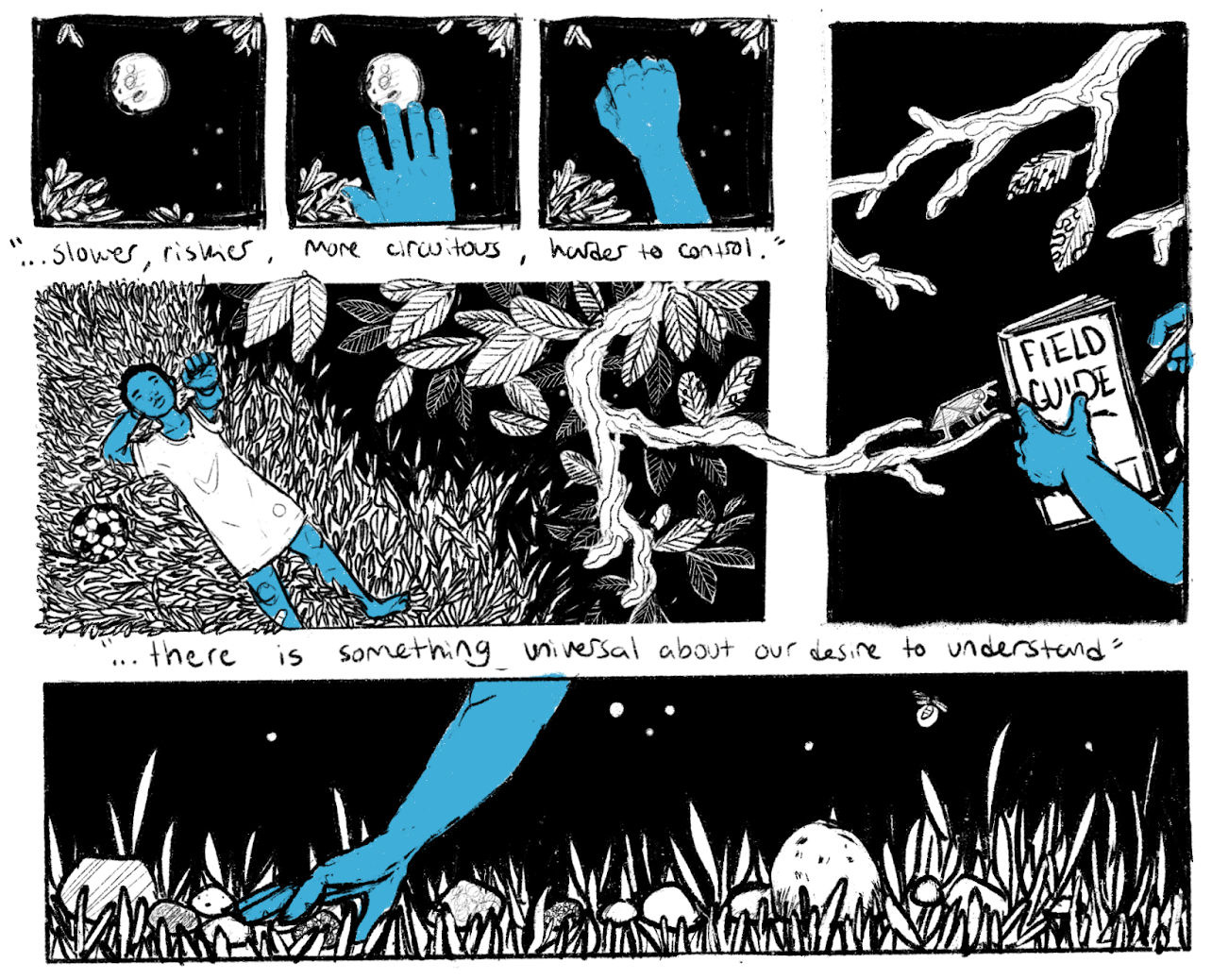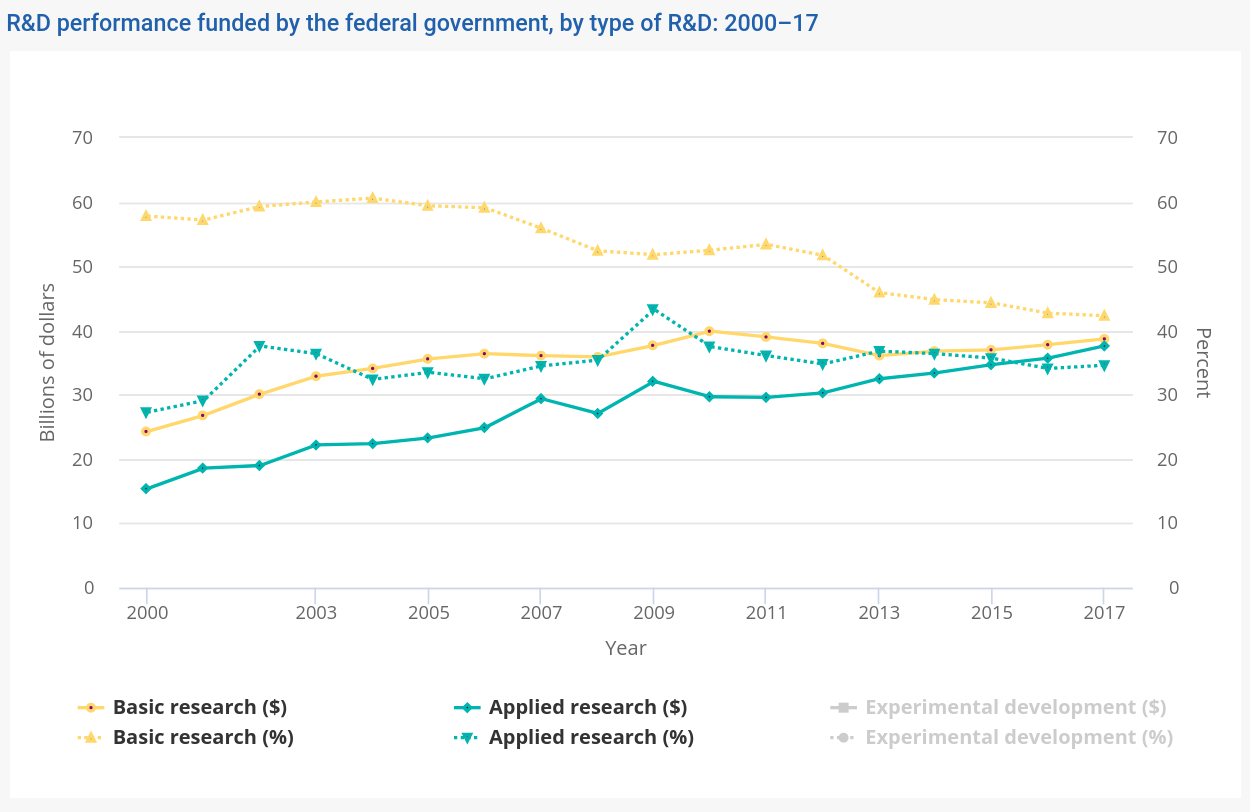
For a short time when I was six years old, I was really into rocks. Armed with a notepad, ruler, and magnifying glass, I’d march to the neighborhood park to catalog its geology in as much detail as I could. I still remember the rush of excitement each time I uncovered something new, imagining that no one had ever set eyes on it before. It was the first time I ever felt like a scientist.
That kind of wondrous, wide-eyed exploration is the reason I decided to pursue research in the first place (albeit more recently as a biologist). This is the realm of what we call “basic” science, which is termed for its focus on curiosity-driven inquiry rather than any inherent simplicity. Yet the closer I get to becoming a card-carrying academic, the more I’m forced to ask myself whether my motivations should be more pragmatic. We urgently need to solve real-world problems, from global pandemics to climate change. Why bother developing abstract theories when we could spend that effort creating new medicines? Even if those theories later prove to be prerequisites that yield practical dividends, getting there by curiosity alone seems slower, riskier, more circuitous, and harder to control.
It’s a debate as old as science itself — and yet I can’t help but feel suspicious of those who deride basic research as foolishly romantic. I’m reminded of the apocryphal story about Michael Faraday who, when challenged by an audience member to justify the value of some discovery, retorted: “Madam, what is the use of a newborn child?” In other words: an infant may be needy and defenseless, but attempting to evaluate its utility isn’t just psychopathic — it’s also missing the point.
Similarly, when science aggressively optimizes for immediacy above all else, it risks missing a wealth of mysteries we have yet to understand or even conceive. How much is a fact really worth? What’s the going rate for a flash of insight, a new model in biophysics, or an entire branch of mathematics? Why did Newton invent calculus, Darwin follow finches, and Einstein ponder gravity? The most impactful advances in human history were born of curiosity alone. And while their initial value is difficult to formulate in dollars and cents, their ensuing practical ramifications have revolutionized our lives. “People cannot foresee the future well enough to predict what’s going to develop from basic research,” says George Smoot, a 2006 Nobel Laureate in Physics. “If we only did applied research, we would still be making better spears.”
On its own, applied research is a fundamentally myopic endeavor. We cannot see the future, and we will never know the answers to our questions unless we ask them first. We’ll never know which new discoveries will be made — or how, or when — until we find them, lurking at the edges of our perception, and yank them into the light. This is the reality of our existence, as inescapable as death, or entropy, or taxes. It’s the reason science must always be a defender of curiosity.
And yet today’s academia leaves less room for basic science than ever before. Only 17% of total U.S. R&D expenditure is devoted to basic research — and while universities performed 58% of it in 2007, that proportion has since dropped to just 48% in 2017. Even federal support for basic research has stagnated over the past decade (in absolute dollars), as reviewers and funding agencies become increasingly risk-averse. Taxpayers and policymakers bristle at the idea of underwriting apparently esoteric research without obvious practical impact. Scientists, forced to devote a growing portion of their time to chasing vital grants, are incentivized to pursue the kinds of projects that are more likely to be funded: low-risk proposals with clear, short-term results. Together, these forces leave curiosity-driven science in a quiet crisis. Society demands progress, but in the words of Lewis Thomas, “we’d like to pay less for it and get our money’s worth on some more orderly, businesslike schedule.”

The resulting trickle-down effects are pernicious. In a country where just 3.6% of total R&D funding reaches universities, competition for those research dollars is intense. Tacitly or overtly, trainees are encouraged to frame, upsell, and twist their research into the most “fundable” version possible. In the life sciences — which account for more than half of all academic research expenditure — it’s common practice to contort grant proposals until they offer some tenuous translational relevance, so that they might be considered by the monolithic National Institutes of Health.
Even if a basic project is funded to completion, the battle to publish its findings remains. Peer review at the most prestigious journals — Cell, Nature, and Science — emphasizes groundbreaking results with broad applicability, which naturally incentivizes authors to play up the importance of their work. Those who publish successfully in “high impact” journals bring in more grant money, boosting their academic careers. Researchers unlucky enough to be interested in unfashionable questions have little recourse; when they fail to publish “well”, and thus to secure further funding, they are promptly ejected from the scientific establishment.
Despite these monumental pressures, pockets of resistance still exist. New communities are emerging with the goal of establishing alternative ecosystems outside of academia, where basic science can flourish. Alternative publishing platforms could help address the limitations of modern peer review. A growing number of private and philanthropic organizations are starting to invest in riskier, exploratory projects, which might help to pick up the slack as federal funding slows. These are all welcome efforts, but we also need fundamental reform — which is where trainees are uniquely equipped to fight back.
To my fellow graduate students: resist the deforming gaze of today’s academia, which compels the commodification of your innate curiosity. You have the freedom to direct your research. Do work that fascinates you, even if you can’t justify its immediate utility. Share your passion with the world instead of letting the world beat it out of you. Tell old friends and first dates about it. Blog about it. Present it at conferences. You will feel pressure to defend your interests in terms of technological advancement or practical impact, but remember that your curiosity is always worth your time. Following it isn’t some recreational or ivory-towered pursuit; it’s the beating heart of what science is all about.
After all, basic science is the original science. Since our earliest sentient ancestors first gazed up at the stars in wonder, we have been fighting to make sense of the universe. In the same way, our childhood fixations — rocks, space, dinosaurs, whatever — reveal that there is something universal about our desire to understand. Curiosity is humanity’s most valuable compass. We must protect it in order to protect our future.
Note: earlier versions of this post appeared as a Viewpoint in Caltech Letters and a feature in The Seeds of Science.
Thanks to Skyler Ware for many rounds of thoughtful edits (and remarkable patience while I shirked my deadlines); Cecilia Sanders for the beautiful header illustration; Niko McCarty, Alexey Guzey, and Divesh Soni for feedback on drafts; and the entire Caltech Letters team for helping bring this little piece to life.